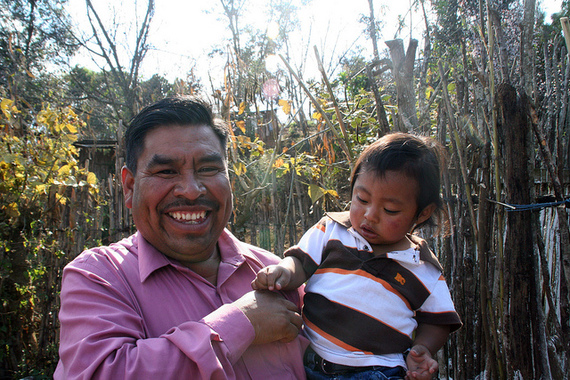In 2012 I was in Tegucigalpa, Honduras, researching immigration and repatriation, and even then the tension in the city was palpable. I felt it most at night, when it was recommended that my group and I remain behind high concrete walls topped with the classic Latin American anti-intrusion rig -- broken bottle glass and concertina wire. Even then, Tegucigalpa was one of the most violent cities in the world, though it rarely made headlines overseas.
My research led me to an organization called the Scalabrini Congregation. The Scalabrinis were founded in 1887, as millions of poor Italians immigrated to the New World. With governments that are often corrupt or inept -- or a frightening mixture of both -- Catholic organizations like the Scalabrinis are a lifeline for immigrants, from providing shelter for departing Central Americans moving north by land, to greeting hundreds of returning deportees at the Tegucigalpa airport.
Today the Scalabrinis are in the middle of the migration crisis in Honduras. In February 2012, I was in a small, concrete office with a Scalabrini sister in a Tegucigalpa suburb. I had arranged to interview her about their work with returned migrants. While child migration was not as large a focus in the United States, many factors pointed to its escalation in Honduras.
A colleague of the Scalabrini sister drove me through farmland and tropical foliage to Tamara, about an hour outside Tegucigalpa. Though this warm winter day in Honduras felt peaceful, my hosts were insistent on returning before dark. I'd never been in a place that transformed so drastically from day to night.
We were going to visit Alexis, who had tried to migrate to the United States as a teenager, but ended up back in Honduras in his home town of Tamara. We stopped at a dirt crossroad, got out of the car, and there he was: a young man in his mid-20s with a baseball hat and T-shirt, holding a phone in his hand and sitting on the side of the road in a wheelchair.
In 2006 Alexis was working as an assistant on a local bus that traveled between Tegucigalpa and Tamara. He lived with his mother and sister; his economic prospects were limited. "I was only able to pay for household costs," Alexis said. "I went looking for a better life."
He left for the United States in April 2006 with a friend, but they separated in Mexico, then traveled mostly by himself. As he approached the United States, he ran out of money and had to take up work in Mexico. After several months, he earned just enough to continue without a guide, hitching rides on Mexican trains bound for Texas.
In August 2006, at the border, Alexis found someone to help him enter the country clandestinely. He crossed near McAllen, Texas, by lying down hidden in the back of a truck. Shortly after his successful crossing, the truck was struck from behind by another vehicle, breaking Alexis' back, paralyzing him below the waist. One of his arms was also damaged beyond use. After recovering in a McAllen hospital, Alexis was immediately flown back to Honduras.
When I met him six years later, it was good to see that Alexis had friends and family to help take care of him. I didn't see any hint of bitterness when we talked. But even before the recent escalation in child migrants, Alexis' story wasn't uncommon. Honduras is filled with communities broken by desperate migration -- migration driven by poverty and violence.
"Some people sell their land, their homes [to migrate]," said Lizette Montoya of the Irish Catholic development organization Trocaire. "Others get hurt on the trip and lose a leg or arm. There are people who lost their limbs who are in the street [in Tegucigalpa] asking for charity."
Montoya said that the migration also leaves families dismembered. "There are mothers and fathers who leave their kids with relatives, producing a type of society that is difficult to manage," she said.
Alexis' experience wasn't the worst among child migrants; thousands of unaccompanied children from Central America are making the same trek to the U.S. border. "A lot of [immigrants] are kidnapped and traded in the black market," said Catholic Relief Services representative for Honduras Juan Sheenan. "They get killed, they get captured, they get forced into the drug trade, they become mules."

A grandfather and his grandson pose for a picture in Corredor Seco, Guatemala, an area near the Honduran border that recently suffered a severe drought in 2012 and received U.S. food aid administered by Save the Children. Photo courtesy of Todd Post/Bread for the World Institute.
Without addressing the root causes of migration in the Northern Triangle, Honduras and other nations will continue losing their youth. This isn't the responsibility of the United States alone, but the United States can work with Central American governments and the diaspora to address the long-term structural factors pushing children like Alexis to embark on desperate journeys from which they often don't return, or from which they return transformed.